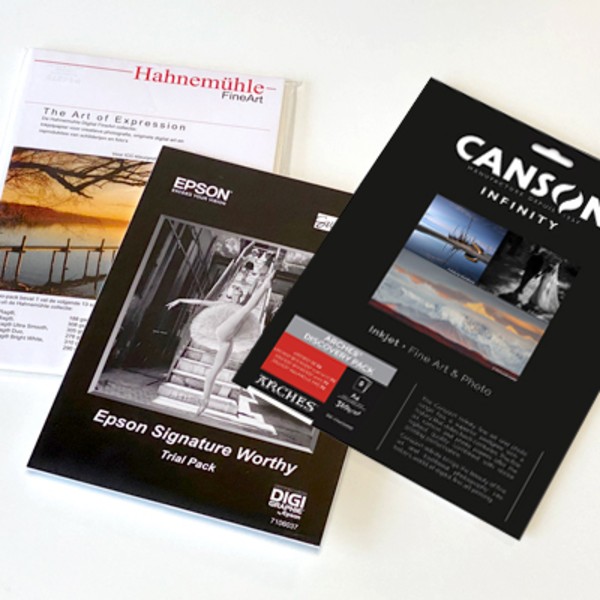Blogs
A beautiful end result; more than just white, color and paper
Door: Cick Geers
The choice of paper is not only made based on the presence of OBAs (described in the previous blog). In addition to the durability of white tones, color fidelity and permanence is also a decisive aspect. We talk about this with Erik Stoffers. Erik and Sandra jointly own Wilcovak; the company for artists where everything happens under one roof. From fine art printing to finishing, framing and personal delivery to the customer. In addition to whites and colors, Erik also talks about the influence of certification and knowledge on the final result of an artwork.
‘At Wilcovak we prefer to work with fine art papers from Canson Infinity. These papers are completely free of OBAs. I can’t say anything else but that it’s a very safe choice when you value long durability. It goes without saying that you can also choose certain types from Epson and Hahnemuhle at Wilcovak. Simply stated: choose a paper where the absence of OBAs ensures that you are not faced with yellowing at an early stage.’
In addition to the choice of paper, inkjet previously offered a choice of pigment or dye. Many artists wonder what the difference between the two is.
PIGMENT vs DYE
Erik clarifies the difference:
‘Pigment is like grains of sand; solid particles of dye mixed in liquid. This makes it difficult to keep a homogeneous distribution of the color. In contrast, the lightfastness of pigment turned out to be extremely good quality’.
Dye is soluble in water. Compare it to salt or sugar. The homogeneity of the dye in the liquid is therefore optimal. At the time, dye was the best choice for a beautiful image. However, the lightfastness of dye turned out to be less good. Dye has not been used in large format inkjet printers for a long time now for this reason’.
However, dye is still used in light sensitive silver halide RA-4 paper. ‘After exposure, color-couplers are used to build up the color of the image with the dyes dissolved in the developer. The image build-up takes place in three color layers in the liquid porous emulsion. The developer process would not be able to work with pigment particles’, says Erik.
Archival Pigment print
‘The pigments used at the moment have a very long shelf life and are extremely lightfast. This means that pigment prints are highly insensitive to light damage. The difference in color space has already been overtaken by greatly improved inks and precision ink heads. This means that an inkjet print (others still call this giclee print) is currently the best choice for art prints. Namely, as soon as highly durable artwork is a factor. The pigment inks in the latest series of Epson printers (2020) currently have a benchmark of 200 years for color and up to 400 years for black and white prints. Because Wilcovak is an Epson dealer through VDP Digital Imaging, we are always working with the latest Epson printers.
Certification
Wilcovak is unique: in addition to being a certified print lab of Canson Infinity, they are also the NL importer of this top class paper. The origin of Canson paper goes back many centuries to the year 1557. The Arches brand, which is marketed under Canson, even dates back to 1492. Painters such as Matisse, Miro, Goya, Picasso, Chagall and Warhol used to work with this beautiful art paper. A big advantage of the importership is that Wilcovak receives a lot of product knowledge from the Canson factory.
Erik: ‘It is also good for artists to know that these same papers have been made suitable for inkjet printing by means of a coating. It is an absolute must that the prints are allowed to cure for 48 hours after printing. The liquid on the print with the pigment must be able to evaporate before the prints can be processed further’.
As a Canson Infinity certified lab, Wilcovak meets specific requirements. This means, for example, that the knowledge must be in order and that the handling of the materials must take place according to certain standards. Similar to this is Digigraphie; the certification of Wilcovak by Epson.
The certifications and importer-ship prove that at Wilcovak printing is more than just Cmd-P. For example, no concessions are made in terms of space and evaporation. And that is very beneficial for the quality!

